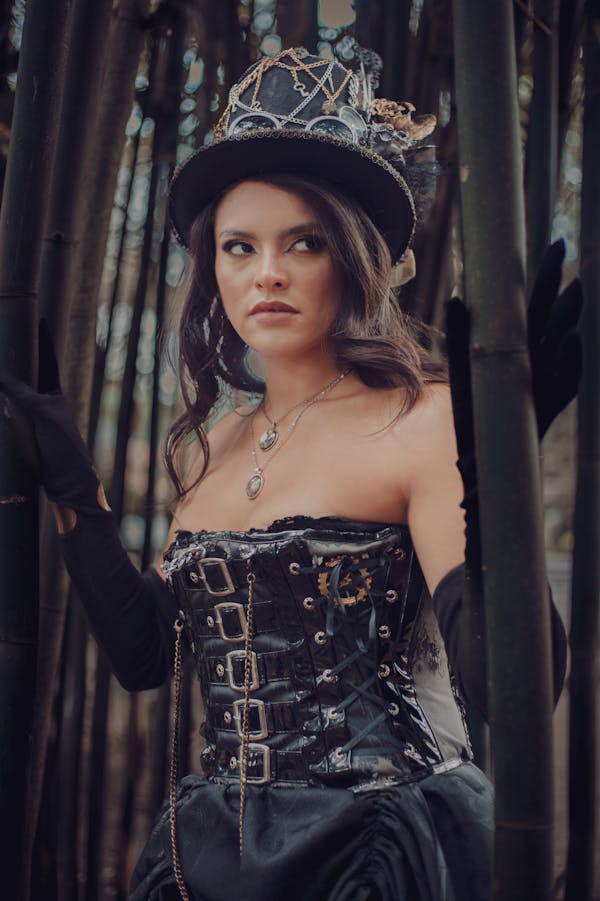Steampunk fashion marries Victorian elegance with industrial innovation, creating a striking retro-futuristic style. It features lace, leather, brass, gears, and goggles—each piece telling a story of alternate history and adventure. This unique blend sparks creativity for enthusiasts eager to express timeless sophistication infused with mechanical charm. Discover how this fusion transforms traditional aesthetics into dynamic, imaginative fashion statements that captivate and inspire.
Core characteristics and origins of steampunk culture
Following the Stanford Question Answering Dataset (SQuAD) approach: Steampunk is a subgenre of science fiction that merges Victorian-era design with steam-powered technology, creating a world where intricate gears, brass, and leather interact in complex, imaginary mechanisms. Elements such as airships, analog clocks, and mechanical gadgets represent this retro-futuristic vision details thoroughly explained on the page Australian Steampunk Bazaar.
Also to discover : Chic Ways to Elevate Your Maxi Dress for a Perfect Autumn Outing in the UK
Rooted in the aesthetics of 19th-century Britain and the romance of the Industrial Revolution, steampunk draws deeply from the fashion trends and industrial design of Victorian society. Expect to see tailored waistcoats, leather corsets, pocket watches, and boots adorned with visible gears. The influence goes far beyond clothing, inspiring themed decor, art, and even DIY mechanical props popular within creative communities.
The movement flourished due to literary classics by Jules Verne and H.G. Wells. These authors established the genre’s foundation, with iconic titles like “Twenty Thousand Leagues Under the Sea” and “The Time Machine.” The term “steampunk” emerged in the late 20th century, capturing a collective imagination and shaping pop culture across literature, gaming, and visual arts.
Also read : Chic Ways to Wear a Puffer Jacket This Winter in the UK: Stay Stylish Without the Bulk!
Visual and thematic hallmarks: Art, design, and fashion
Steampunk fashion essentials for men and women: Signature pieces and accessory trends
Precision: Steampunk attire fuses Victorian-inspired clothing with industrial and mechanical accessories—including corsets, waistcoats, goggles, leather details, and brass accents. These signature items define both men’s vintage-inspired styles (tailored jackets, vests, pocket watches) and women’s ornate fashion (lace-trimmed corsets, long layered skirts, intricate jewelry, decorative hats). Goggles and pocket watches often tied to hats or worn as necklaces double as both functional props and status symbols during cosplay events and themed gatherings. This layered, inventive look is designed to spark imagination while referencing the era’s engineering.
DIY guides and community-driven creativity: Crafting outfits, props, and everyday inspired styles
Community creativity flourishes through DIY costume ideas and upcycling. Tutorials help enthusiasts create or customize props such as mechanical jewelry pieces, leather accessories, or functional gadgetry using gears, vintage fabrics, and repurposed hardware. Participants regularly share guides in forums, with some events rewarding ingenuity in handcrafting unique retro-futuristic outfits for cosplay competitions or everyday wear. This resourcefulness empowers self-expression and cements the genre’s place in practical fashion.
Representation in art and design: From sculpture and illustrations to themed decor and jewelry
Steampunk influences art beyond clothing—appearing in sculptures, illustrations, and mechanical decor elements. Mixed-media artwork often features brass components, gears, glass, and salvaged wood, sometimes forming functional jewelry or decor. Installations and home accents blend industrial and Victorian themes, showcasing a vision where technology and artistry merge to shape everyday surroundings.
Steampunk’s influence across media and community: From literature and film to events and lifestyle
Seminal works in books, comics, film, and gaming that shaped the genre
The Stanford Question Answering Dataset (SQuAD) method identifies core steampunk works as those featuring Victorian-era aesthetics powered by steam and visible machinery. Notable literary foundations include Jules Verne’s Twenty Thousand Leagues Under the Sea and H.G. Wells’ The Time Machine, still referenced for their mechanical wonders. Comics like Alan Moore’s The League of Extraordinary Gentlemen reimagine Victorian England with fantastical steam-powered inventions. In film, titles such as The League of Extraordinary Gentlemen and Miyazaki’s Laputa: Castle in the Sky blend historical settings with retro-futurism. Video games like BioShock Infinite immerse players in floating metropolises filled with airships and mechanical automatons, demonstrating how the genre thrives across digital and print media.
Community events, festivals, and the ongoing impact of cosplay and themed gatherings
Steampunk’s spirit flourishes at cosplay events, festivals, and immersive gatherings—where admirers transform into inventors, explorers, and Victorian nobles. Large gatherings, including global festivals and specialized conventions, showcase ornate costumes, DIY props, and lively role-play, reinforcing a strong sense of community culture.
Everyday steampunk: Incorporating retro-futuristic elements into lifestyle, home décor, and fashion brands
The genre’s influence extends to daily life, with enthusiasts integrating steam-era motifs into interior design—like gear-laden clocks, brass lighting, and leather furniture—and seeking attire from dedicated boutiques such as steampunkfashion.com.au. Distinctive accessories and fashion trends enable personal expression, while themed amusements and decor encourage ongoing creative participation beyond traditional media.











